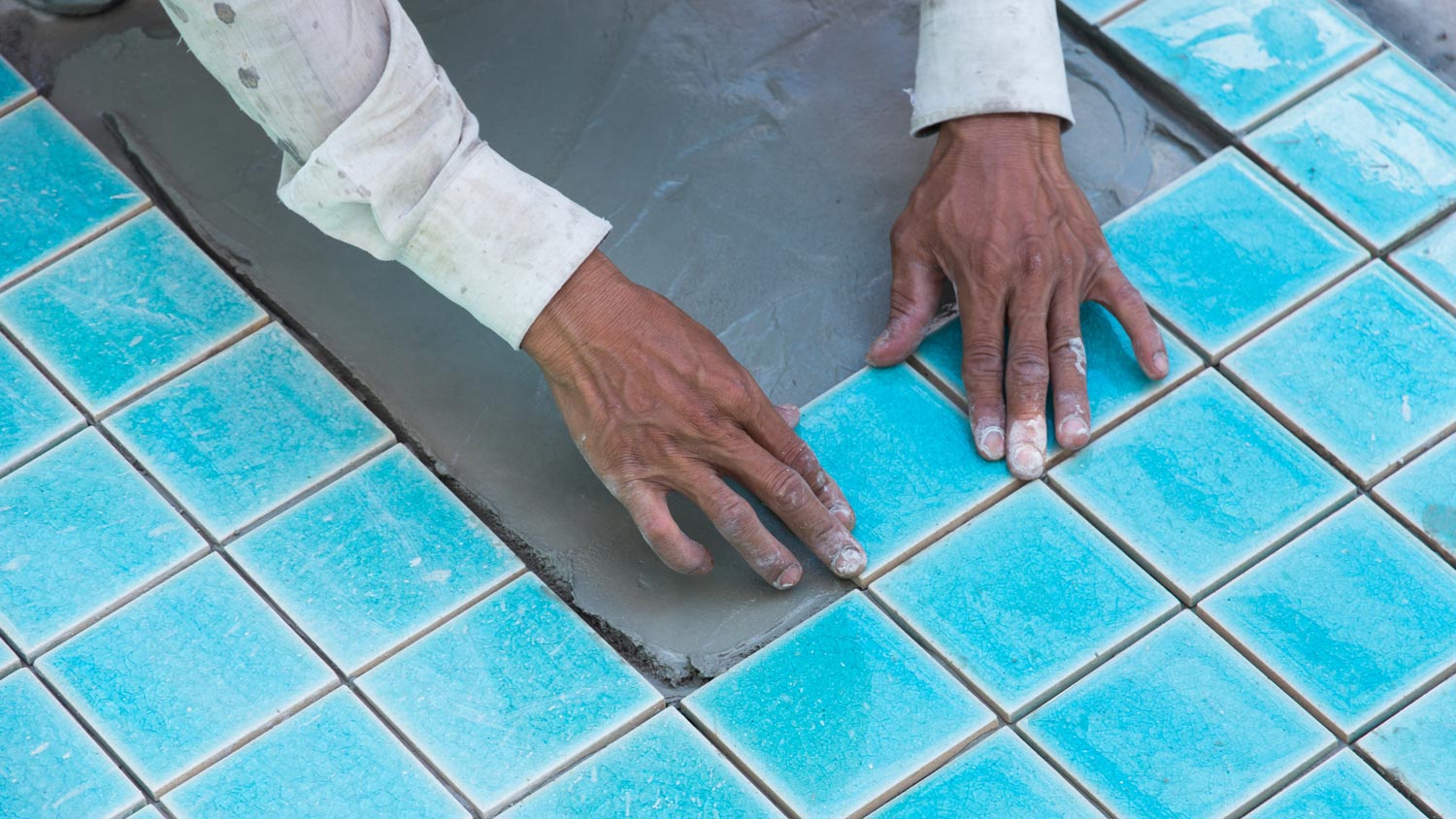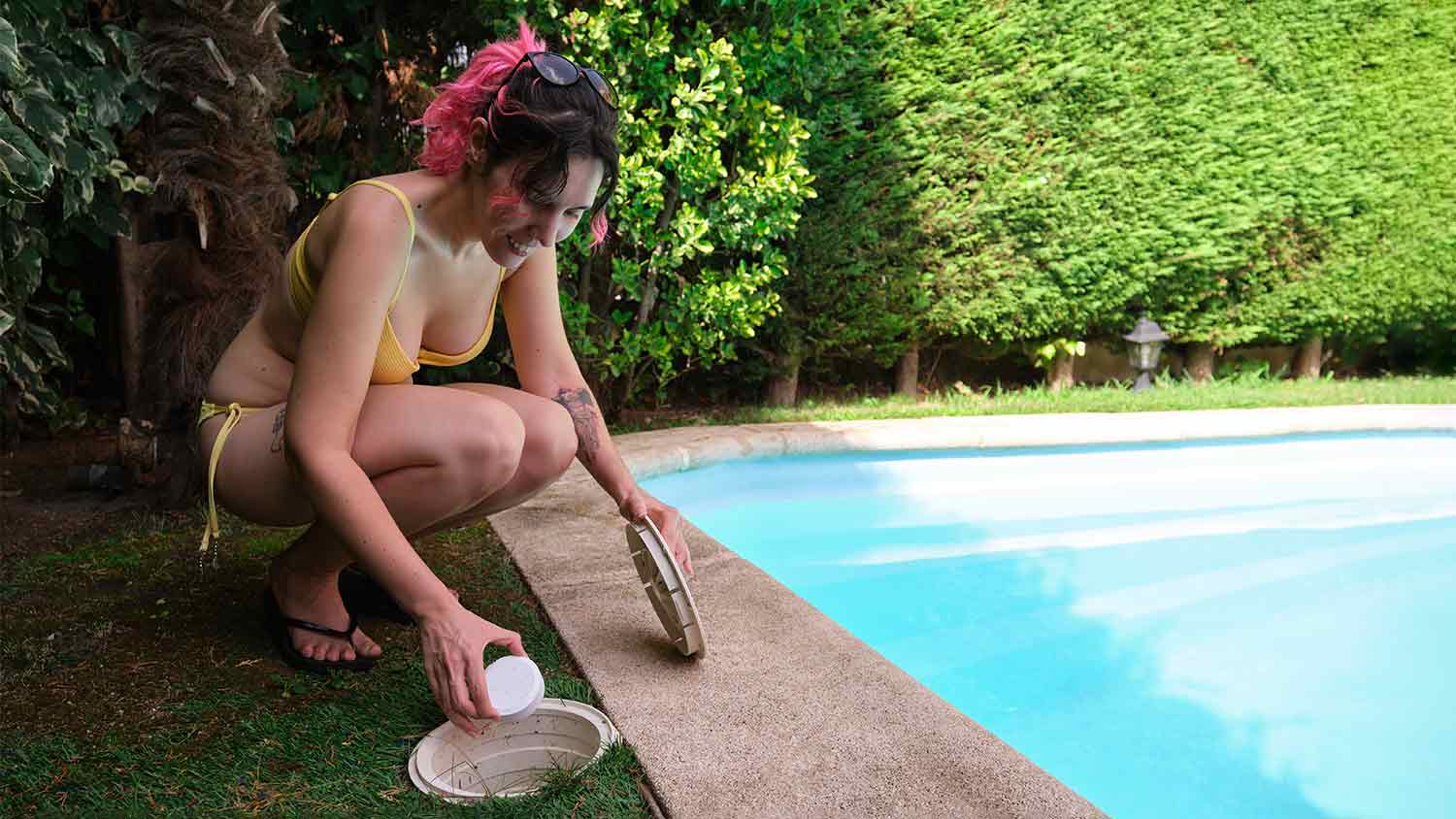
Considering a swimming pool for your backyard? Find out everything you need to know about in-ground pool costs, from materials to labor and more.
Dive into these tips for a beautiful (and safe!) pool


Pool resurfacing involves refinishing or repairing the top layer of your pool's floor.
Pool resurfacing gets rid of harmful cracks and potentially slippery surfaces.
Having your pool resurfaced can help reduce your water bill.
The job can be done out of season so you don’t miss out on summer afternoon soaks.
A backyard pool is a dream for anyone who wants to spend their summer afternoons soaking and splashing. The thing is, though, pools need to be maintained to keep them looking (and functioning) their best. And while it’s not part of routine pool maintenance, resurfacing your pool (aka, replacing or repairing the outer layer surface) is something you may need to do as your pool gets older.
No matter what surface your pool is lined with, there are advantages to tackling this project. Here are a few reasons to resurface your pool.
Plaster and cement pools need to be resurfaced every three to seven years. Fiberglass pools can go as long as 30 years, but probably be checked on and maintained every 15. As your pool ages, you may notice dirt, sediment, and just a generally grimier appearance in the water.
Regularly cleaning and resurfacing your pool will extend its life. It's definitely an investment (most pool resurfacing project costs start at $1,000)—but is definitely more affordable than replacing a pool that's been damaged beyond repair.
Swimmers kicking off the edges and bottom, chemical treatments, and other stressors wear your pool's lining out over time. This can lead to:
Cracks
Hollow spots
Swollen spots
Areas where the concrete shell breaks through
Leaks in the plumbing
Resurfacing gets rid of these unsightly (and potentially expensive!) areas.
Filling a pool with water costs between $60 and $1,250 on average. For new pools, you may only need to add water once or twice a season. But if your pool is leaking because the surface is old or cracked, you'll probably be putting new water in it regularly. It may not hit your water bill all at once, but it's definitely getting rid of money. Resurfacing eliminates leaks and can reduce your water bill in the process.

Cracks and swollen spots around the edge of your pool can be dangerous for swimmers or people passing by. Also, worn-down cement or plaster may lose its ridges, making your pool's surface area more slippery.
If your pool really needs some upgrades—for example, if there are serious rust stains on the surface—it could pose a health issue, too.
Thinking about selling your home? Rust or surface stains in your pool are detractors for guests and potential buyers alike. Many homeowners want a pool in their yard, but unsightly lounging areas scream "You'll have to fix me to enjoy me!" to potential buyers.
To put it simply: the newer your pool looks, the more value it has to potential homebuyers.
Some homeowners get concerned that resurfacing their pool will take away from summer fun, which results in them waiting years to finally do it. Fortunately, resurfacing can be done in off-months, too.
Of course, depending on the climate you live in, you may not be able to resurface your pool during a snowstorm. But late fall or early spring is a fine time to have your pool resurfaced, and a local pool resurfacing company may have less on the books at that time, too—it only takes five to seven days for a pro to resurface a pool. If you're doing it in season, you might consider tackling the project when you'll be out of town or unable to enjoy your pool.
From average costs to expert advice, get all the answers you need to get your job done.

Considering a swimming pool for your backyard? Find out everything you need to know about in-ground pool costs, from materials to labor and more.

Thinking about switching from chlorine to salt water in your pool? Learn how much a saltwater pool conversion costs in this informational guide.

Knowing you have a pool leak is one thing, but finding it is another. We'll cover pool leak detection costs and what to expect from the repair bill.

Our chlorine calculator helps you determine the exact amount of chlorine to add to your pool, based on its volume and your desired parts per million (ppm) level.

If you own a pool, you may wonder: how many gallons in my pool? Read on for our pool volume calculator to learn how much water is in your swimming pool.

From soaks to aerobics to cold dips, having a plunge pool offers tons of benefits. Learn everything you need to know about DIY plunge pool ideas and tips.